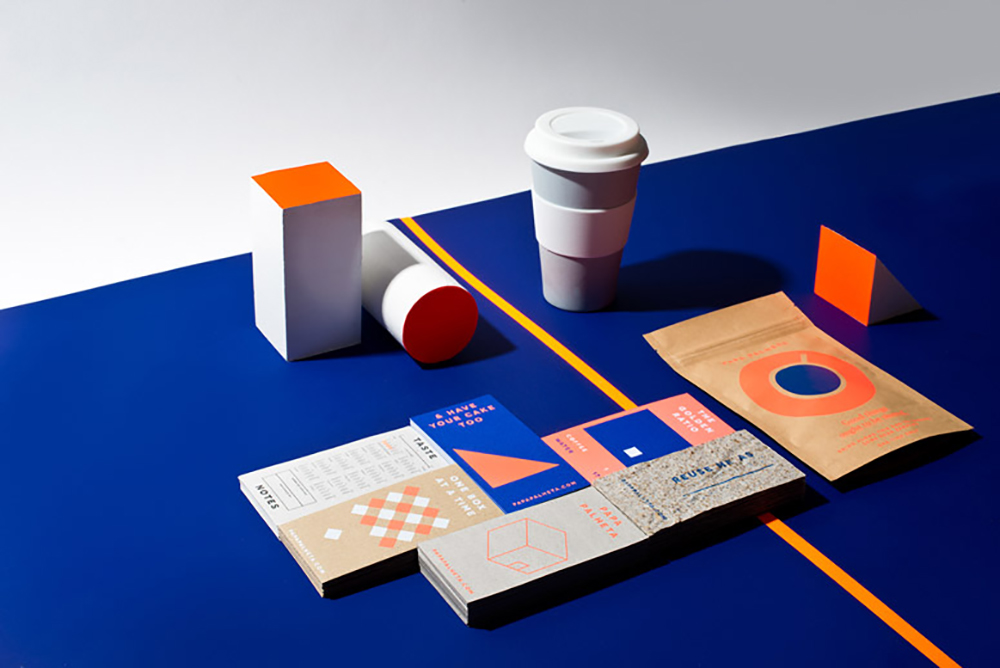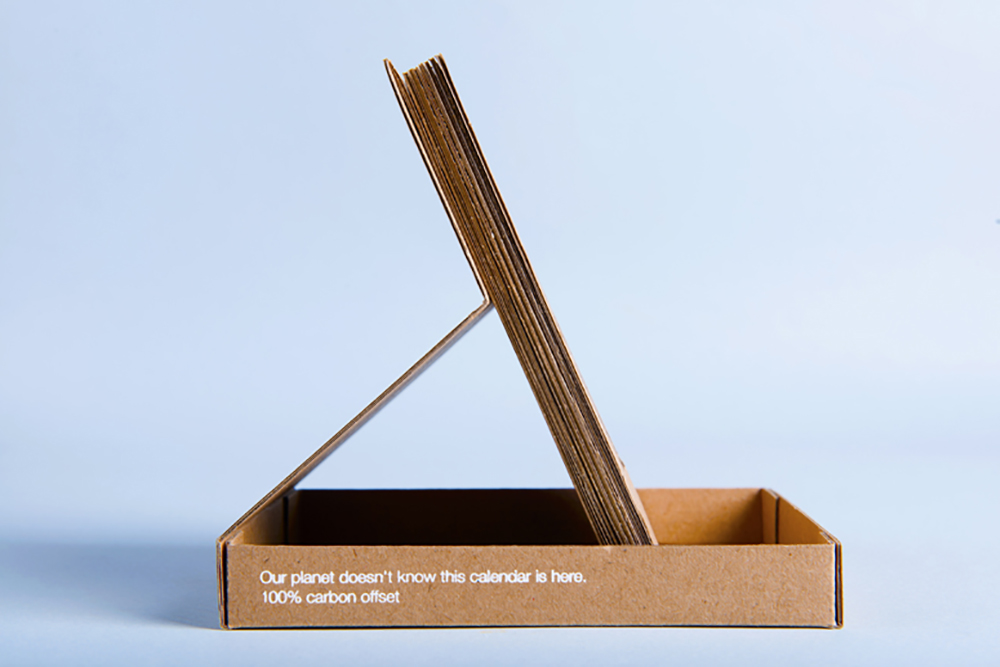Demystifying Sustainable Printing
Recycle, reduce, reuse. This eco-conscious proverb has been in our heads since grade school. You might have put it to use by making bird feeders out of old milk jugs then, but at a time when our environmental regulations are being aggressively cut back it’s important to explore the more practical ways we can put this idea into action.
In 2013, more than 65% of paper consumed in the U.S. was recovered for recycling. That’s pretty freaking great. As brands and marketers, let’s put some of that recycled paper to use for all the identity projects, direct mail, corporate reports, brochures, packaging, invitations, menus and packaging.
Green printing provides a high-quality end-product without harming the environment. So, when it comes time to start sifting through the various color options, textures and paper weights, add sustainability to your list of items to consider before going to press.

Beautiful handmade business cards made with recycled paper and real grape stems. You can get your own with this business printing services.
In 2017, IKEA will pave the way for more than just Swedish meatball cuisine. They’re replacing their 12-15 million plastic gift and refund cards with a green, crack-resistant paperboard sheet called Invercote.
“We want to reduce the use of petroleum-based plastic in general and particularly where we do not have control over the product’s afterlife,” explains Per-Ola Nilsson, who works as technical support for paper and print at IKEA Indirect Materials and Services. “We can’t know what the consumer will do with the gift card, so then an organic material like paperboard is better in this case because it damages nature less if it is not recycled properly.” Nilsson says. “What we’re after is the premium feeling. Invercote has extremely good printability and stays flat when you place it on a flat surface, which is important so that people will experience the cards as being of the highest quality.”
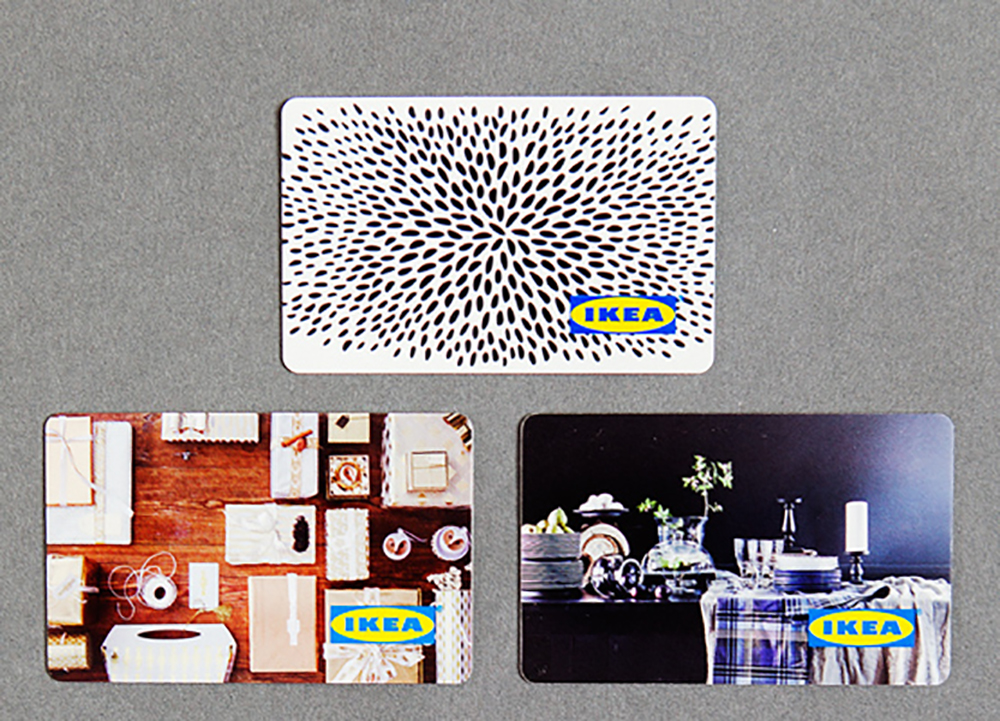
Misconceptions about Sustainable Printing
There is talk that green printing and the use of recycled papers creates low-quality prints. It’s been a subject of debate for years. We consulted one of our favorite printing partners, Jeff Larson, VP at CrossTech Communications, to clear the air on this notion. Jeff eased our minds, confirming that stocks containing recycled content perform equal to stocks without recycled content.
He advises for folks to consider the fact that with all papers (and similar materials) certain stocks will be more suitable for a particular project, so it’s always a good idea to check with your printer prior to production to ensure the materials you selected will achieve the look you’re aspiring to create.
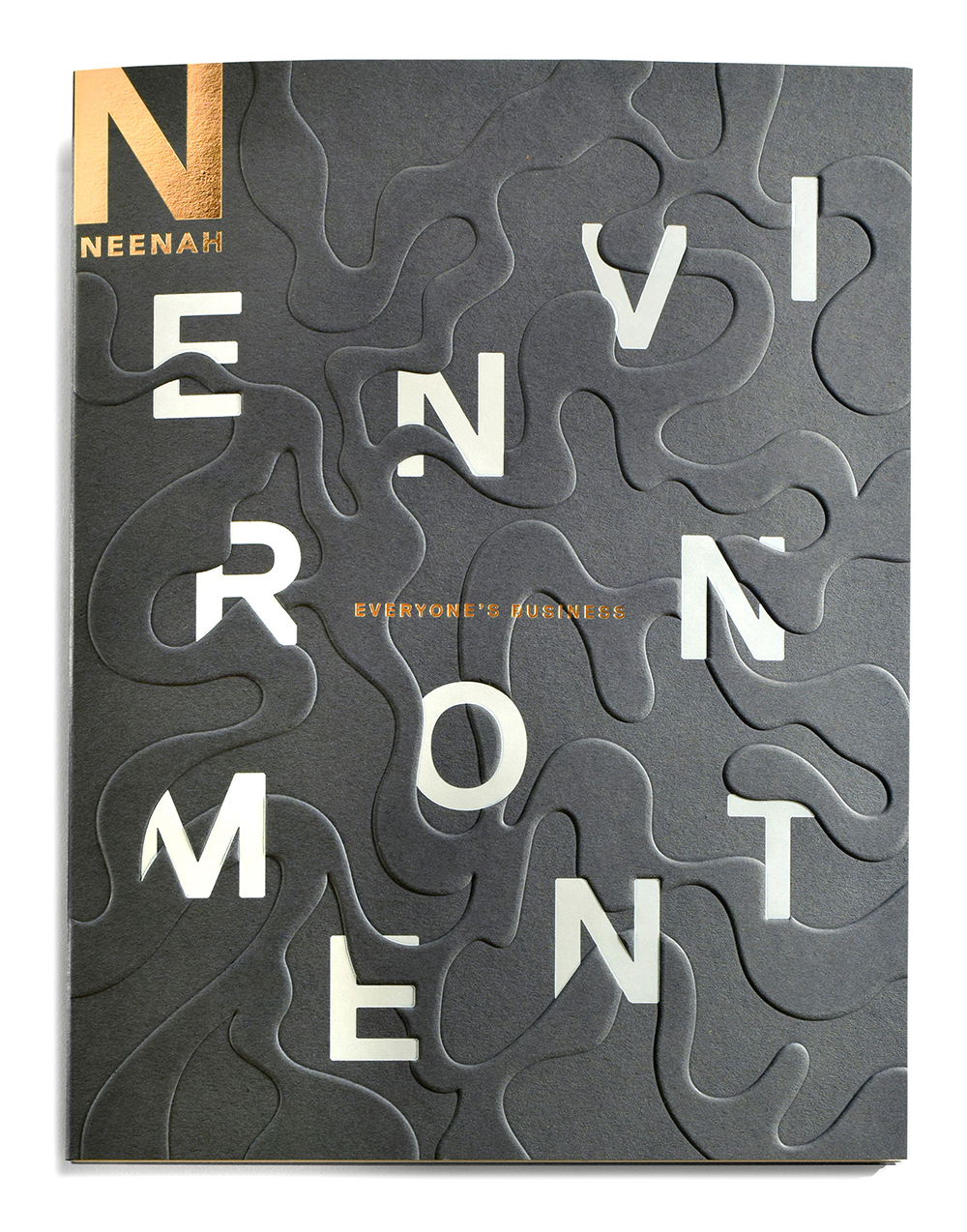 The Neenah Environment line of papers perfectly blends luxury and sustainability in one seamless, sexy package.
The Neenah Environment line of papers perfectly blends luxury and sustainability in one seamless, sexy package.
While discussing recycled paper products and trends, Jeff gave us some other hot tips on what’s available to consumers in the green printing space.
Papers Produced From Post-Consumer Waste
Many papers today contain some amount of recycled content. Typically, this recycled content is from post-consumer waste (PCW). This means that you can have your pick of papers that use anywhere from 10% to 100% post-consumer fibers. Here are some common stocks that are readily available and easy to get your hands on:
10% PCW
- McCoy
- Opus
- Sterling, Premium
- Utopia, One & Two
50% PCW
- Mohawk, Loop Silk
100% PCW
- Neenah, Conservation
- Neenah, Environment
- Mohawk, Loop Inxwell
- Neenah, Royal Sundance
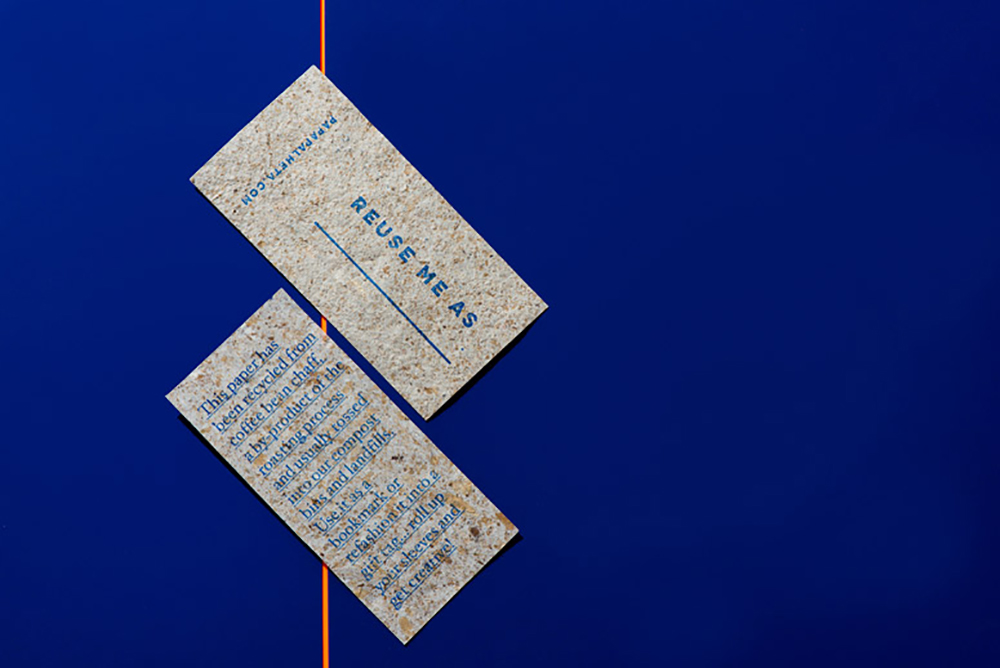 This Singapore coffee brand uses a card printed on recycled pulp paper made with blended coffee chaff (an underused by-product of roasting coffee), prompting their customers to repurpose it as a bookmark or thank-you card.
This Singapore coffee brand uses a card printed on recycled pulp paper made with blended coffee chaff (an underused by-product of roasting coffee), prompting their customers to repurpose it as a bookmark or thank-you card.
Alternative Stocks
There are also other treeless stocks available that don’t originate from wood fiber at all. Soporset, for instance, comes from Eucalyptus fibers that are highly renewable and fully recyclable.
Within the synthetic lines, you can find “green” films, which are made from sources that don’t include any nasty petroleum. Over time, printers expect to see many more options within this class of stocks.
 Recycled paper stocks don’t have to mean your pieces get a soft, earthy look. Recycled papers can easily give a clean, polished feel as well.
Recycled paper stocks don’t have to mean your pieces get a soft, earthy look. Recycled papers can easily give a clean, polished feel as well.
Other Environmental Factors
Thinking beyond recycled papers, paper mills themselves have become much more environmentally conscious, providing some of the following earth-friendly features and benefits:
- FSC/SFI Certification (wood content from well-managed forests)
- Green Seal (clean energy certified)
- Carbon Neutral (mill’s carbon footprint is measured and offset through the purchase of carbon offset credits)
- Wind Power (paper is manufactured with energy derived through wind power)
- Chlorine Free (paper bleached without the use of chlorine)
Shorter print runs also help make print more environmentally friendly. By producing fewer pieces, there is less waste through obsolescence. This ensures that the pieces printed achieve their goal before they are out of date or get damaged on the shelf.
Good For the Earth, Good For Your Wallet
Sustainable printing uses less of our planet’s valuable natural resources, while adding value to your bottom line. In the lower range PCW categories there are many cost-effective options for paper choices, which can equal big savings.
It is true that since there are fewer stocks available in the higher PCW categories, they do tend to be more expensive. One way to add value here is to share that you’re using sustainable materials with your consumers. Being transparent with your values will create an opportunity for consumers to connect with you on a deeper level, increasing brand loyalty and making you more memorable.
Have you explored sustainable printing for your brand or at your agency? Have any tips or lessons learned? Drop us a line in the comments and let us know about your experience.
Interested in exploring sustainable print options for your brand? We are too! If you’d like to work with BatesMeron on a print project that’s as sustainable as it is successful, email us. We’d love to work with you.
The Curse of Knowledge
Insights from the Intern: Putting the Sweet in BatesMeron Sweet Design
A Non-Gardener's Guide to the Chicago Flower & Garden Show






